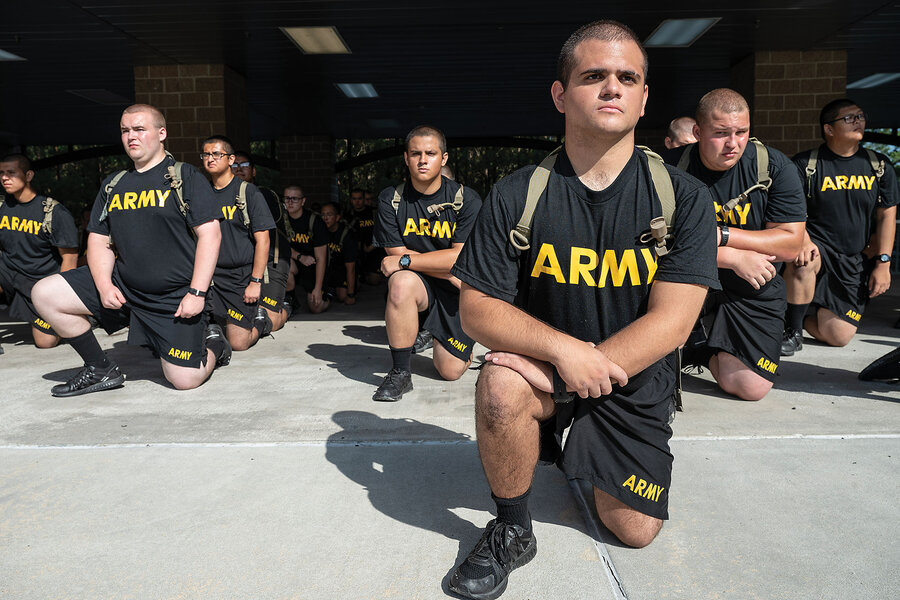Breaking News: Inside the Grueling Transformation of Recruits at Fort Benning
 In a high-stakes environment where every second counts, new recruits at Fort Benning, now officially Fort Moore, undergo a grueling 10-week transformation that prepares them for the rigors of military life. Each year, over 60,000 hopefuls step into this demanding program, where discipline, strength, and resilience are forged under intense pressure.
In a high-stakes environment where every second counts, new recruits at Fort Benning, now officially Fort Moore, undergo a grueling 10-week transformation that prepares them for the rigors of military life. Each year, over 60,000 hopefuls step into this demanding program, where discipline, strength, and resilience are forged under intense pressure.
As recruits arrive, the clock starts ticking. Within the first 72 hours, they are thrust into a whirlwind of activity—receiving uniforms, undergoing drug tests, and being issued essential gear. The infamous “shark attack,” once a rite of passage marked by chaos and intimidation, has been replaced by the “first 100 yards,” a new initiative focused on mentorship and teamwork. This shift underscores the Army’s commitment to building leaders, not just soldiers.

Sleep deprivation is a constant companion for these recruits, who average only four to six hours of rest each night as they adapt to an unrelenting schedule. The physical demands are staggering, with training sessions burning up to 600 calories per hour. Recruits face a series of obstacle courses designed to mimic real combat conditions, testing their strength, agility, and mental grit. The Derby Mile obstacle course, a grueling mile-long test featuring over 20 challenges, pushes recruits to their limits, both physically and mentally.

One of the most harrowing experiences is the gas chamber exercise, conducted during the third week. Here, recruits learn to trust their equipment amidst panic-inducing conditions. Entering the chamber with M50 gas masks, they perform light exercises before removing their masks, facing the intense effects of CS gas—tearing eyes, coughing, and skin irritation. This exercise, while uncomfortable, teaches composure under pressure and the critical importance of equipment reliability.
Training at Fort Moore also includes repelling exercises from heights of 40 to 60 feet, simulating real-world descents during operations. Recruits learn to manage fear and control their descent, skills vital for airborne missions and urban warfare scenarios.
Rifle training is another cornerstone of their education, where recruits master marksmanship with the M4 Carbine. They engage targets from various distances, honing their skills under strict time constraints. Successful recruits earn marksmanship badges, a testament to their accuracy and consistency.
The training extends beyond firearms; recruits also learn casualty care and medical training, equipping them to provide life-saving aid under fire. Through simulations and hands-on practice, they master critical skills like applying pressure bandages and performing emergency procedures.
As graduation approaches, recruits stand on the brink of transformation, ready to transition into the United States Army. The rigorous training at Fort Moore not only prepares them for combat but instills a sense of purpose and discipline that will guide them throughout their military careers.
Stay tuned as we continue to cover the intense journey of these brave individuals stepping up to serve their country.






